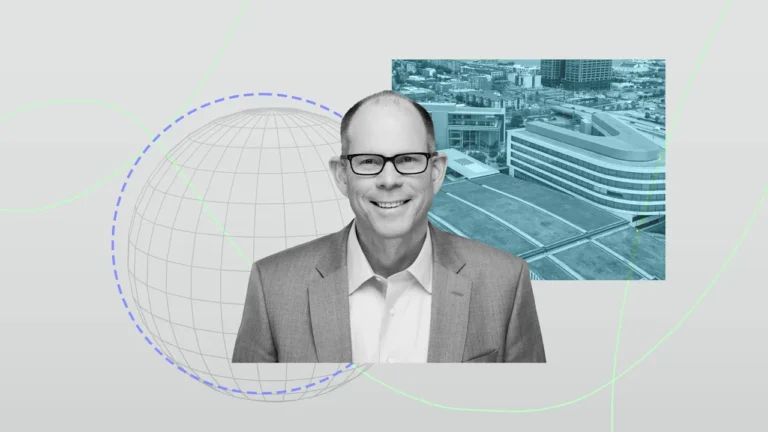
It’s March 2028 and Dr. Sarah Chen is having her morning coffee in her San Francisco apartment while managing a global education nonprofit that reaches 2.3 million children across 47 countries. Her team? Seven people. Her annual budget? Less than what most traditional nonprofits spend on rent.
Sarah is fictional but the operating model she represents is already emerging in 2025.
AI-native nonprofits, which integrate AI into the design of their programs, infrastructure, and culture from inception, enabling them to work with greater speed, efficiency, and scale, will outperform traditional ones. These organizations are designed to scale like software companies, with AI handling operations, reporting, and service delivery. They’re faster, cheaper, and in many cases, more effective than legacy players.
Every fictional scenario below is grounded in real trends and technologies already in motion.
2026: AI agents collect real-time impact data
It’s January 2026, and the first ever AI-enabled Impact Transparency Report reveals that voice AI systems have been calling beneficiaries of 127 global nonprofits, asking them simple questions: “Did this program actually help you? How? Can you give us an example?”
The results shatter everything we thought about nonprofit effectiveness. The report reveals that organizations that looked identical on paper—same budgets, metrics, and glossy annual reports—show wildly different real-world impact. Programs that report reaching 50,000 people changed only 200 lives. Meanwhile, programs that claim modest numbers created ripple effects across entire communities.
By spring 2026, something unprecedented happens: Funders start asking for real impact data, in real time. Not workshop attendance, not materials distributed, but real change in people’s lives. Something that was too expensive for most nonprofits to track in pre-AI era becomes commonly available because of AI agents.
“Real Impact OS” becomes the nonprofit sector’s equivalent of Google Analytics—except instead of tracking website clicks, it tracks if lives are improved. This real-time impact data allows the program to increase funding by 340%.
2027: The intelligence explosion
Meanwhile nonprofits no longer need to employ traditional case workers. Instead, a three-person team can focus entirely on relationships and strategic decisions while AI agents handle intake interviews, skills assessments, job matching, and follow-up support. The per-person cost is now 70% lower than traditional programs, but the success rate is 40% higher.
This is the year organizations start thinking like software companies: build once, deploy everywhere.
By fall 2027, the “AI Native Ventures” incubator in London has launched 200 social impact organizations. Each follows the same playbook: identify a proven intervention, adapt it using AI for local context, launch with minimal human oversight, and scale rapidly.
2028: The tipping point
By January 2028, the transformation becomes undeniable. A major international study shows that “AI-native nonprofits” are achieving 300-500% better cost-effectiveness ratios than traditional organizations.
But the real shift isn’t in the numbers: It’s in how problems get solved.
When a humanitarian crisis hits South Asia in February 2028, the response looks nothing like the chaotic coordination of previous disasters. Within hours, AI systems process satellite imagery, translate emergency information into local dialects, and coordinate resources across 47 aid organizations without coordination meetings
The old model of flying in foreign experts and holding endless coordination meetings becomes as obsolete as sending faxes.
By year-end 2028, something unprecedented happens: Several nonprofits announce they’re changing focus not because they ran out of funding, but because they succeeded.
The “Compound Impact Fund,” launched in 2026, reinvests returns from successful scaling into new challenges. It’s the social sector’s first successful exit—organizations graduating because their work is done.
The new ecosystem
What emerges by 2028 isn’t just more efficient nonprofits—it’s an entirely different ecosystem.
Young people no longer need to choose between tech careers and creating social impact. The artificial distinction between for-profit and nonprofit becomes meaningless when organizations achieve massive scale with tiny budgets.
The old funding model—where organizations spent 60% of their time writing grants and 40% doing work—reverses. AI handles grant applications, impact reporting, and donor communications. Humans spend their time on strategy, relationships, and breakthrough innovations.
This future is being built today
This transformation isn’t waiting for 2028—it’s happening now. And it’s already being recognized on global stages.
Switzerland-based, Spring ACT’s Sophia chatbot supports survivors of domestic violence in 172 countries, offering 24/7, anonymous guidance in more than 20 languages, helping users understand their rights, explore safe options, and securely store evidence without leaving a trace. It recently won the Pro Bono Collaboration Award at the AI for Good Global Summit in Geneva.
In India and beyond, CareNX Innovations’ Fetosense is reducing maternal and infant mortality with a portable, AI-powered fetal monitoring system that detects distress early in low-resource settings. Deployed in over 2,500 clinics across six countries and credited with a 30% drop in NICU admissions, it earned the AI for People Award at the Summit.
In India, Ethiopia, Kenya, and Nigeria, Farmer.Chat is delivering AI-powered, hyper-local agricultural advice via text, voice, and video to over 460,000 smallholder farmers—most of them women—helping boost yields, adapt to climate shifts, and access markets. The platform was awarded the AI for Prosperity Award at the Summit.
Smart funders are already repositioning. Google committed $30 million through its Generative AI Accelerator this year to help nonprofits worldwide harness AI for their communities, offering $500,000 to over $2 million per organization plus pro bono support and technical training.
Final thoughts
The organizations that will lead this transformation are making decisions today about tomorrow’s capabilities.
They’re not asking, “How can AI help us write better grants?” They’re asking, “How would we redesign our entire theory of change if intelligence was abundant and deployment was instant?”
The transformation is happening with or without your organization. The only question is: Which side of the revolution will you be on
Jacek Siadkowski is CEO of Tech To The Rescue.


